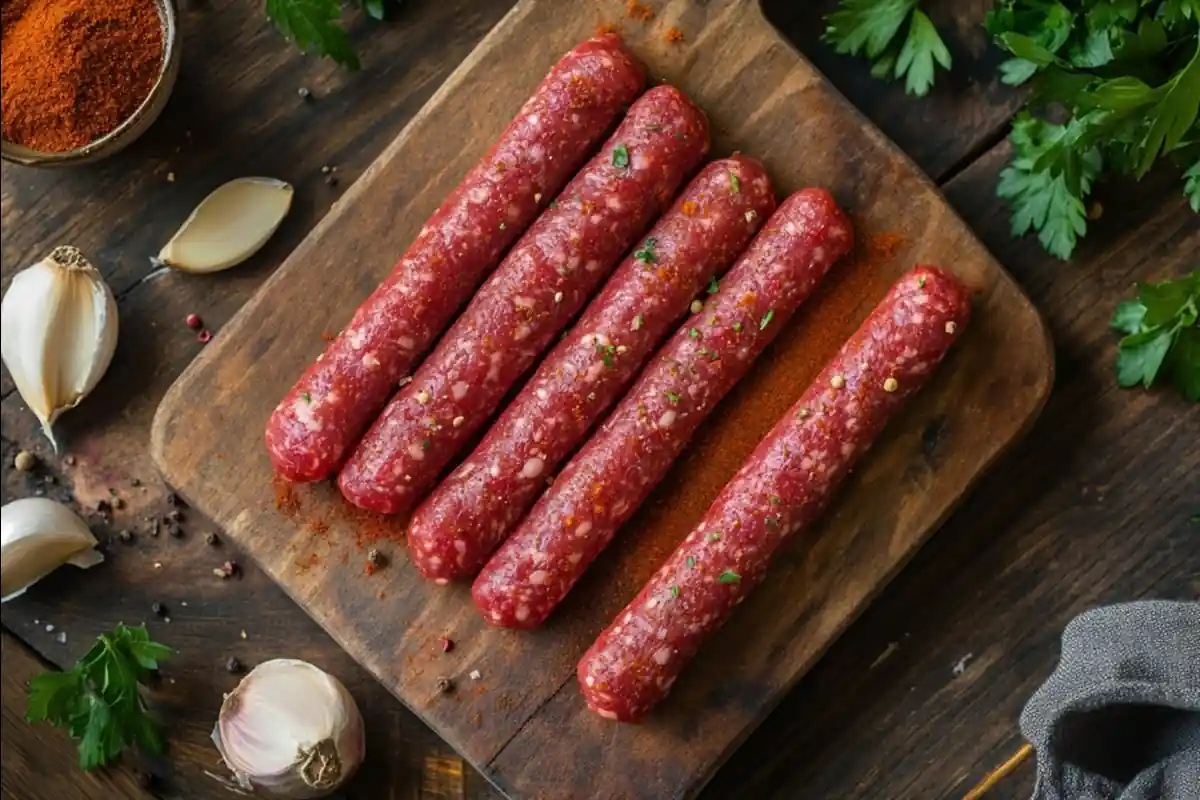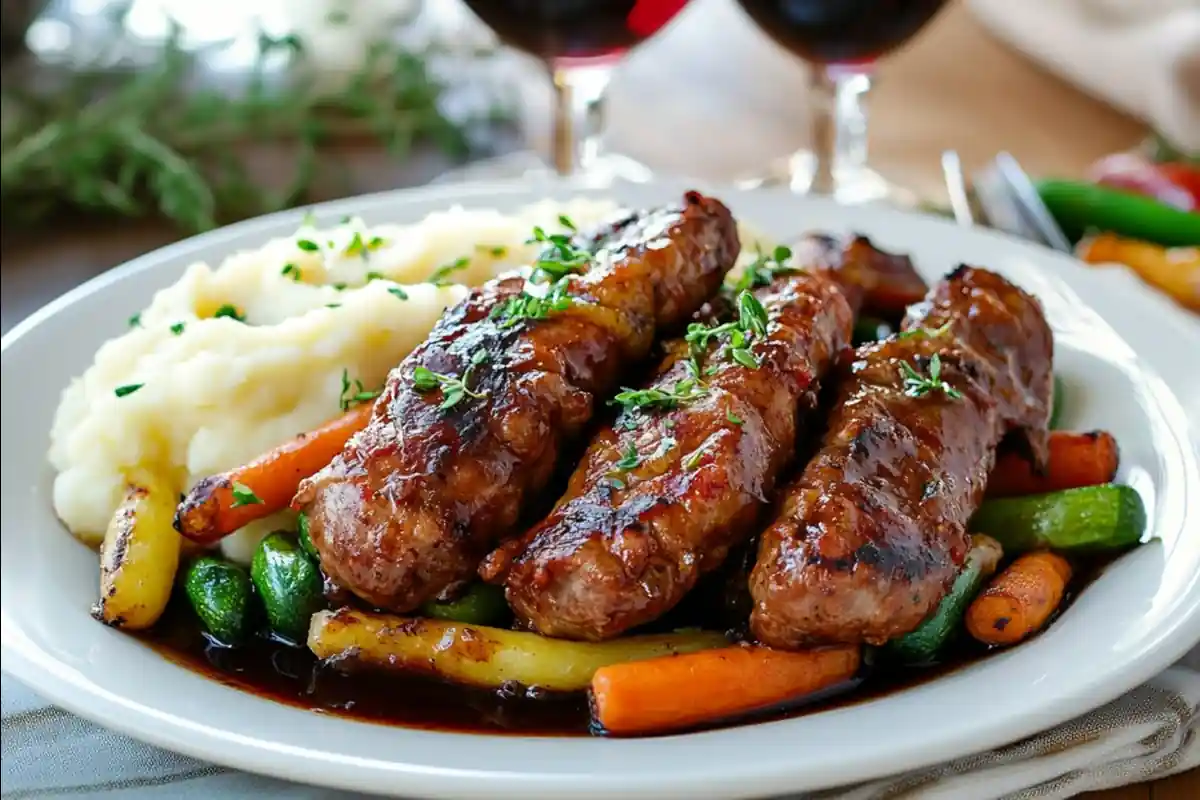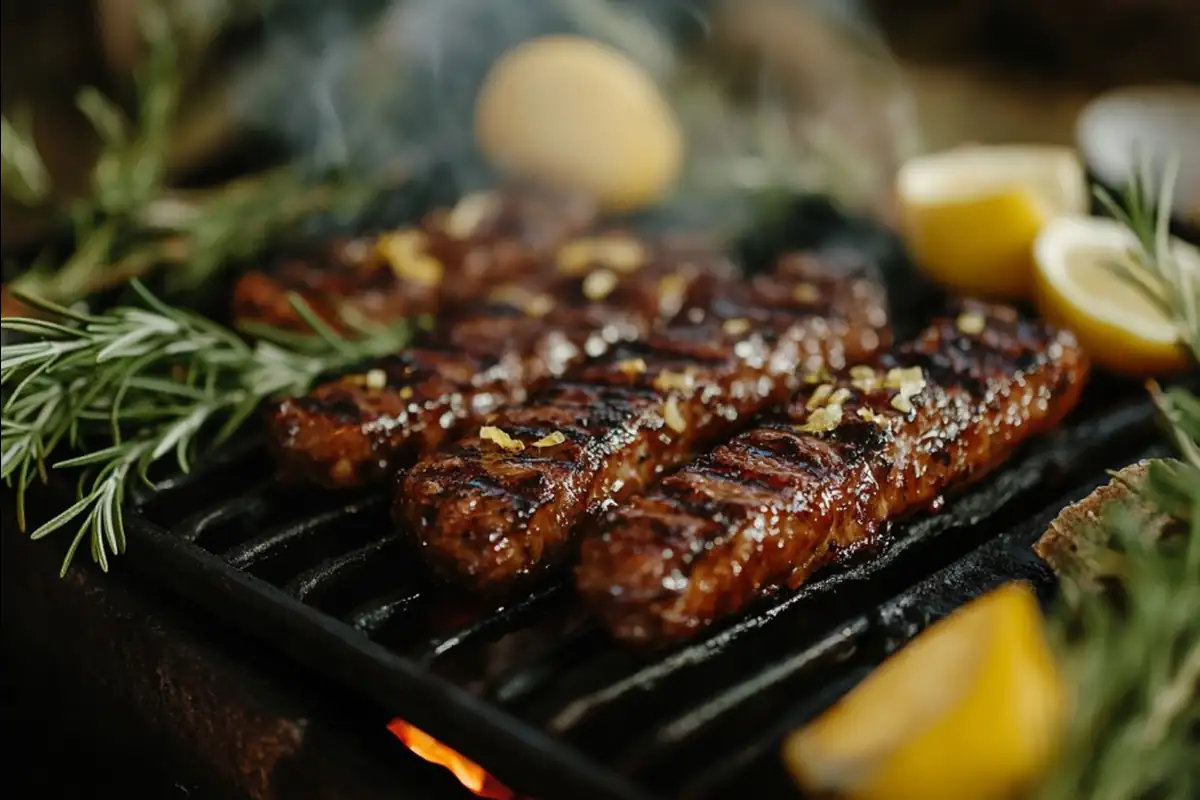What are meat fingers? If you’ve ever wondered about the fascinating world of meat cuts, this unique and flavorful option is worth exploring. Today, we’ll dive into the flavorful and lesser-known realm of meat fingers. This unique cut of beef, nestled between rib bones, offers a tender and juicy option that’s gaining traction among food enthusiasts. From understanding what meat fingers are to exploring their culinary potential, this article will cover everything you need to know. Whether you’re curious about their origins, cooking techniques, or dietary value, we’ve got it all here.
1: Introduction to a Unique Beef Cut
What Makes This Beef Cut Special?
Simply put, meat fingers are thin, tender strips of beef harvested from the spaces between individual rib bones in the rib primal. These flavorful cuts are often described as “finger-like” due to their long and slender shape. Known for their rich marbling and robust taste, meat fingers are popular among grilling enthusiasts and lovers of BBQ-style cooking.
This cut, often referred to as “rib fingers” or “beef finger meat,” is prized for its ability to absorb flavors from marinades and spices. Its natural juiciness makes it a hit in cuisines worldwide, from smoky American BBQs to sizzling Asian stir-fries.
Origins of the Term “Meat Fingers”
The term “meat fingers” originated from the resemblance these cuts bear to fingers, both in shape and size. While they’ve long been a staple in some cultures, they’ve recently gained recognition as an economical yet tasty alternative to pricier rib cuts. Historically, rib fingers were considered a byproduct of rib carving but have since become a coveted ingredient in modern kitchens.
Exploring Its Global Popularity
The appeal of meat fingers isn’t confined to one region. In the United States, they’re often grilled or smoked to perfection, highlighting their natural juiciness. Meanwhile, in Asian countries, these cuts are stir-fried or simmered in broths, showcasing their versatility. This global popularity stems from their balance of tenderness, fat content, and rich, beefy flavor.
2: Understanding the Cut

Anatomy of Meat Fingers: Where They Come From
Meat fingers, often called rib finger meat, are derived from the spaces between the rib bones in the rib primal. These cuts are harvested after the main rib roast or ribeye sections are removed, leaving behind tender and flavorful strips of meat. The unique position of meat fingers gives them a balance of marbling and lean texture, making them ideal for various cooking methods.
The meat’s natural fat content enhances its juiciness and ensures it retains moisture during cooking. As a result, meat fingers are a popular choice for grilling, smoking, and stir-frying.
Difference Between Rib Fingers and Other Beef Cuts
What sets meat fingers apart from other beef cuts is their shape and flavor profile. Unlike brisket or sirloin, meat fingers have a stringy texture due to their position between ribs. This makes them more fibrous but equally tender when cooked properly. Their versatility shines, as they can be used in recipes that call for slow cooking or quick grilling.
When compared to back ribs, which are bone-in and contain less meat, meat fingers provide a higher meat-to-fat ratio, making them more economical and flavorful.
Nutritional Profile of Meat Fingers
These cuts are not just delicious—they’re packed with nutritional benefits too. Meat fingers are rich in protein and iron, essential for muscle building and energy production. They also contain healthy fats that contribute to satiety and flavor. However, they can be higher in fat than leaner cuts, so portion control is key for those watching their calorie intake.
3: How to Cook Rib Fingers to Perfection
Mastering Cooking Techniques
When it comes to cooking meat fingers, the possibilities are endless. Popular methods include:
- Grilling: The high heat of a grill caramelizes the natural sugars, giving the meat a smoky, charred flavor.
- Smoking: Low and slow smoking enhances the rich, beefy taste, making it perfect for BBQ enthusiasts.
- Braising: Slow cooking in liquid breaks down the fibers, resulting in melt-in-your-mouth tenderness.
For tips on smoking techniques, check out this BBQ guide on beef ribs.
Tips for Seasoning and Flavors
Achieving the perfect flavor begins with seasoning. A simple blend of salt, pepper, garlic powder, and paprika can elevate the taste of meat fingers. For a more adventurous twist, try a spicy dry rub or an Asian-inspired marinade with soy sauce, garlic, and ginger. Don’t forget to let the meat rest after seasoning for deeper flavor penetration.
Popular Recipes Using Meat Fingers
- BBQ Style: Grill or smoke the meat and glaze it with a tangy BBQ sauce. Serve with coleslaw and cornbread for a hearty meal.
- Asian Stir-Fry: Quickly sear meat fingers with vegetables in a hot wok, then coat them in a savory soy-based sauce.
- Western Slow-Cooked Stew: Braise the meat with root vegetables and herbs in a rich broth for a comforting dish.
For creative ideas, explore this stir-fry recipe featuring beef fingers.
4: Culinary Uses of Meat Fingers

Incorporating Rib Fingers in Everyday Dishes
When exploring what are meat fingers, it becomes clear that their versatility is a game changer in the kitchen. These cuts can effortlessly elevate a casual dinner or add richness to an elaborate feast. For breakfast, try incorporating shredded, pre-cooked meat fingers into a hearty omelet or breakfast burrito. During lunchtime, they shine as a flavorful protein in wraps or atop a mixed greens salad.
For dinner, meat fingers can take center stage in various dishes. Toss them into pasta with a rich tomato sauce for a quick weekday meal, or use them in tacos with a squeeze of lime and a sprinkle of cilantro for a Mexican-inspired twist. Their adaptability allows you to experiment with global flavors without needing to change the cooking techniques drastically.
Pairing Ideas for a Balanced Meal
To balance the rich flavor of meat fingers, pair them with complementary sides and sauces. Mashed potatoes or roasted vegetables create a satisfying contrast to the meat’s texture. If you’re serving grilled meat fingers, try a tangy chimichurri or creamy horseradish sauce to enhance their natural flavors. For smoked versions, a sweet-and-smoky BBQ sauce is always a crowd-pleaser.
Looking for more pairing inspiration? Explore recipes like beef finger ribs and sides to take your meal to the next level.
5: Buying and Storing Meat Fingers
How to Select Quality Cuts
Choosing high-quality meat fingers is crucial for a successful dish. When purchasing fresh meat fingers, look for cuts with a bright red color and a good amount of marbling, as these indicate freshness and flavor. If buying frozen, ensure the package is free from excessive frost, which may suggest freezer burn. Trust reputable butchers or well-rated grocery stores for consistent quality.
For those on a budget, consider buying in bulk and freezing individual portions for future use. It’s also wise to check for sales on rib primal cuts that include meat fingers.
Best Practices for Storage
Proper storage is essential to maintain the quality of meat fingers. If you’re cooking within a day or two, keep them in the refrigerator at a temperature below 40°F. For longer storage, wrap them tightly in freezer-safe bags or vacuum-sealed packaging to prevent freezer burn. Frozen meat fingers can last up to six months without losing quality.
When defrosting, always do so in the refrigerator overnight rather than at room temperature to prevent bacterial growth.
For more tips on storing meats like meat fingers, check out this guide to beef cuts and storage.
6: Health and Dietary Considerations
Are Rib Fingers a Healthy Choice?
When pondering what are meat fingers and their health implications, the answer depends on preparation and portioning. Meat fingers are an excellent source of high-quality protein, which supports muscle repair and growth. They also provide essential nutrients like iron, zinc, and vitamin B12, crucial for energy production and overall health.
However, it’s worth noting that meat fingers can be higher in fat compared to leaner cuts. While this fat contributes to their tenderness and flavor, it also means they should be enjoyed in moderation, especially for those managing calorie intake or heart health. Opting for grilling or smoking over frying can help keep them healthier.
Substitutes for This Cut of Meat
If you can’t find meat fingers or prefer a leaner option, consider substitutes like flank steak, skirt steak, or brisket. These cuts mimic the texture and versatility of meat fingers while offering varied fat content to suit your dietary needs. For a vegetarian twist, try using jackfruit or tofu in recipes where you’d traditionally use meat fingers. These plant-based substitutes can replicate the hearty texture and absorb flavors just as effectively.
7: Frequently Asked Questions
What Is Another Name for Finger Meat?
Meat fingers are often called rib finger meat or beef rib fingers. These names highlight their origin from the rib primal section, specifically the meat between the rib bones. The terms are interchangeable and may vary by region.
Is Finger Meat Good?
Yes, meat fingers are considered a delicious and versatile cut. Their rich marbling enhances their juiciness and flavor, making them ideal for grilling, smoking, or slow-cooking. As long as they are prepared properly, they can be a tasty addition to any meal.
Is Finger Meat Tender?
When cooked correctly, meat fingers are incredibly tender. Slow-cooking or smoking breaks down the connective tissue, resulting in a melt-in-your-mouth texture. Quick-cooking methods like grilling can also yield tender results if the meat is not overcooked.
What Is a Substitute for Beef Finger Meat?
If meat fingers aren’t available, try using short ribs, flank steak, or even boneless ribeye as substitutes. These cuts share similar flavor profiles and cooking versatility, making them excellent alternatives.
8: Conclusion
Why Meat Fingers Deserve a Spot on Your Plate
If you’re still wondering what are meat fingers, the answer lies in their versatility, flavor, and nutritional value. These finger-like cuts of beef from the rib primal are a hidden gem in the world of culinary meats. Packed with rich marbling, they deliver a juicy and tender experience that can elevate your cooking.
From grilling and smoking to braising and stir-frying, meat fingers are adaptable to various cooking styles and cuisines. Their robust flavor pairs beautifully with a range of spices, marinades, and sides, making them a staple for creative chefs and home cooks alike.
Final Thoughts on This Underrated Cut
To make the most of meat fingers, always choose fresh, well-marbled cuts for maximum tenderness and flavor. Season generously, and don’t rush the cooking process—these cuts shine when given the time to absorb flavors and develop their texture.
For inspiration, experiment with global recipes that incorporate bold spices and complementary sauces. Whether you’re hosting a backyard BBQ or preparing a cozy family meal, meat fingers are sure to impress.
9: Additional Inspiration
Ready to Cook? Explore More Recipes!
Now that you’ve learned what are meat fingers and their culinary potential, it’s time to put your knowledge to use. Explore creative ways to enjoy this flavorful cut in recipes inspired by global cuisines. For more ideas, check out this comprehensive guide on beef finger recipes.


2 thoughts on “What Are Meat Fingers? A Comprehensive Guide to This Unique Cut of Meat”